06 Random Access
Let
| Symbol | Meaning |
|---|---|
| \(T_\text{fr}\) | Time to transmit a frame |
| \(T_p\) | Propagation Delay |
| \(G\) | Average no of frames requested per frame-time |
| \(S\) | Throughput (Number of packets successfully transmitted per packet time) |
| \(V\) | Vulnerable Time Time bracket for potential collision |
Protocols¶
| Pure ALOHA | Slotted ALOHA | CSMA | CSMA/CD | CSMA/CA | |
|---|---|---|---|---|---|
| IDK | Carrier Sense Multiple Access Listen before transmission Node does not send if another node already sending Uses persistence methods | Collision Detection Listen to channel while packet being sent Node stops sending if \(\exists\) interference | |||
| Assumptions | Stations trying to transmit follow Poisson Distribution | All frames are of same size Time divided into equal slots (time to transmit a frame) Nodes start transmission only at start of slot If 2/more nodes transmit, all nodes detect collision | Constant length packets No errors, except ones caused by collisions Each host can sense transmissions of all other hosts Propagation delay is small compared to transmission delay | 1. Check line is quiet 2. Detect collision ASAP 3. If collision detected, stop transmission; wait random time and start over | |
| Preferred for | Wired Networks | Wired Networks | (not used; always used with CD or CA) | Slow Wired Networks (since efficiency reduces for faster networks; as bandwidth increases, collisions increase) | Wireless Networks (WLAN) (since all signals are broadcasted and collisions cannot be detected) |
| Minimum Frame Length | Frame length such that \(T_t > 2 \times T_P\) | ||||
| \(V\) | \(2 \times T_\text{fr}\) | \(T_\text{fr}\) | \(T_P\) | ||
| \(S\) | \(G \times e^{-2G}\) | \(G \times e^{-G}\) | |||
| \(G_\text{max}\) | ½ | 1 | |||
| \(S_\text{max}\) | 0.184 | 0.368 | |||
| Flowchart | 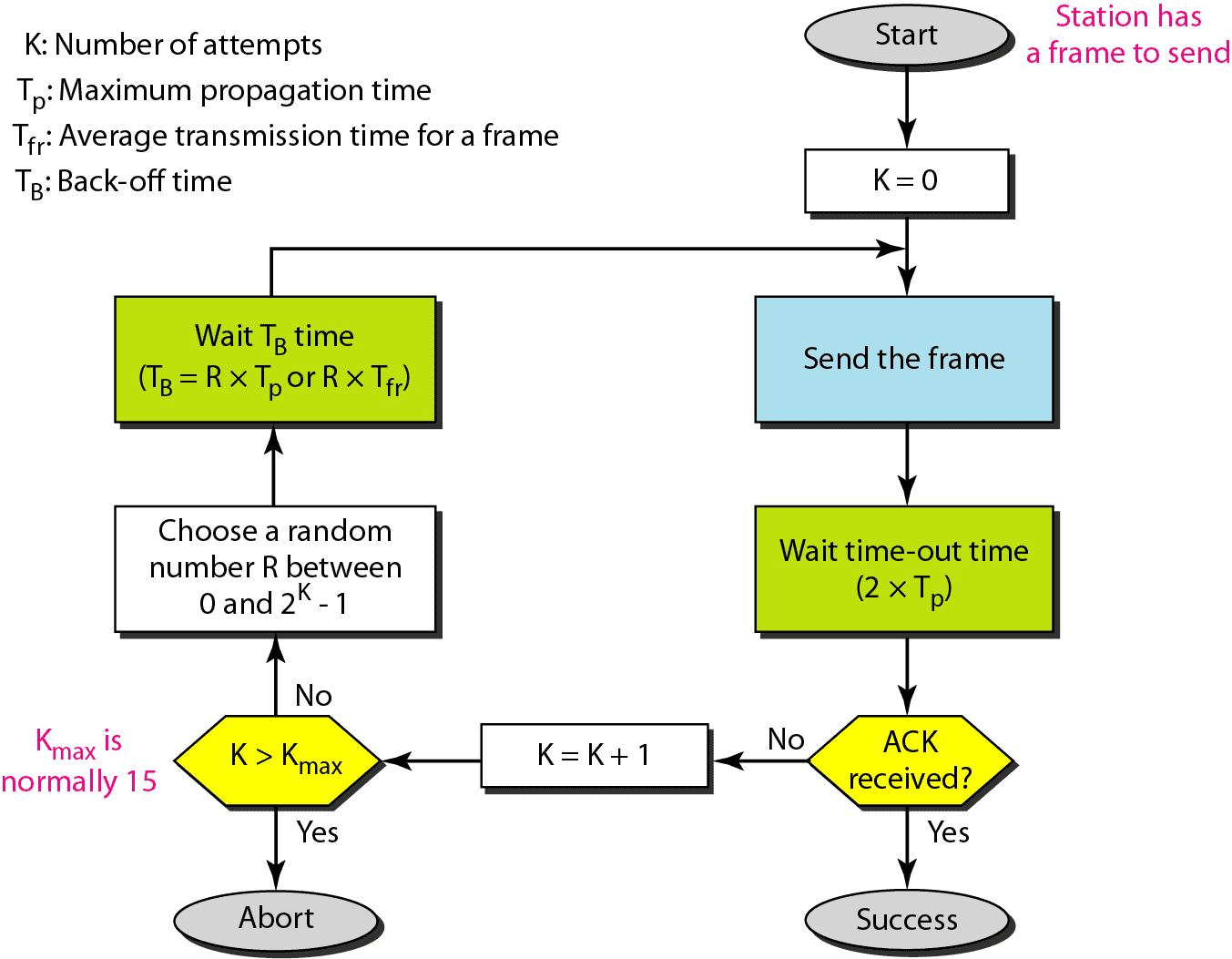 | 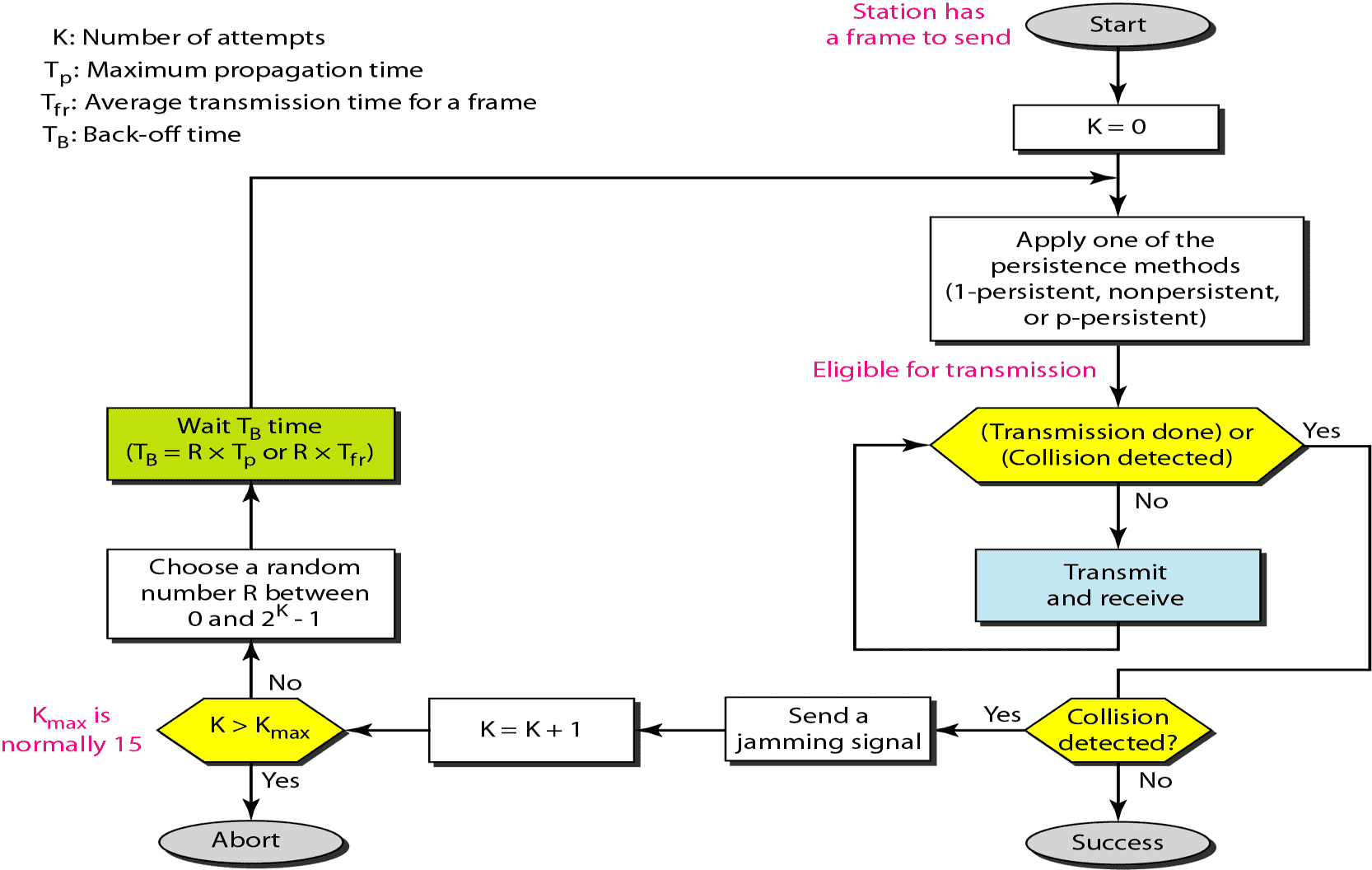 |
CSMA/CD¶
CSMA/CA¶

DCF¶
Distributed Coordination Function
DCF sublayer uses CSMA
-
if station has frame to send, it listens to medium
-
if medium idle, station may transmit
- else waits until current transmission complete
No collision detection possible due to wireless network
DCF includes delays that act as a priority scheme
Combination of
| Full Form | Contains | |
|---|---|---|
| CSMA/CA | ||
| RTS | Request/Ready to Send | Duration required for channel |
| CTS | Clear to Send | MAC address |
| NAV | Network Allocation Vector | |
| DIFS | Domething InterFrame Space | |
| SIFS | Something InterFrame Space |
Steps¶
When a station wants to transmit data
-
It sends an RTS packet to the intended receiver
-
The RTS packet contains the length of the data that needs to be transmitted
-
Any station other than the intended recipient hearing RTS defers transmission for a time duration equal to the end of the corresponding CTS reception
- The receiver sends back CTS packet back to sender if it is available to receive
-
The CTS packet contains the length of the data that original sender wants to transmit
-
Any station other than the original RTS sender, hearing CTS defers transmission until the data is sent.
- The original sender upon reception of the CTS, starts transmitting.
Flowchart¶
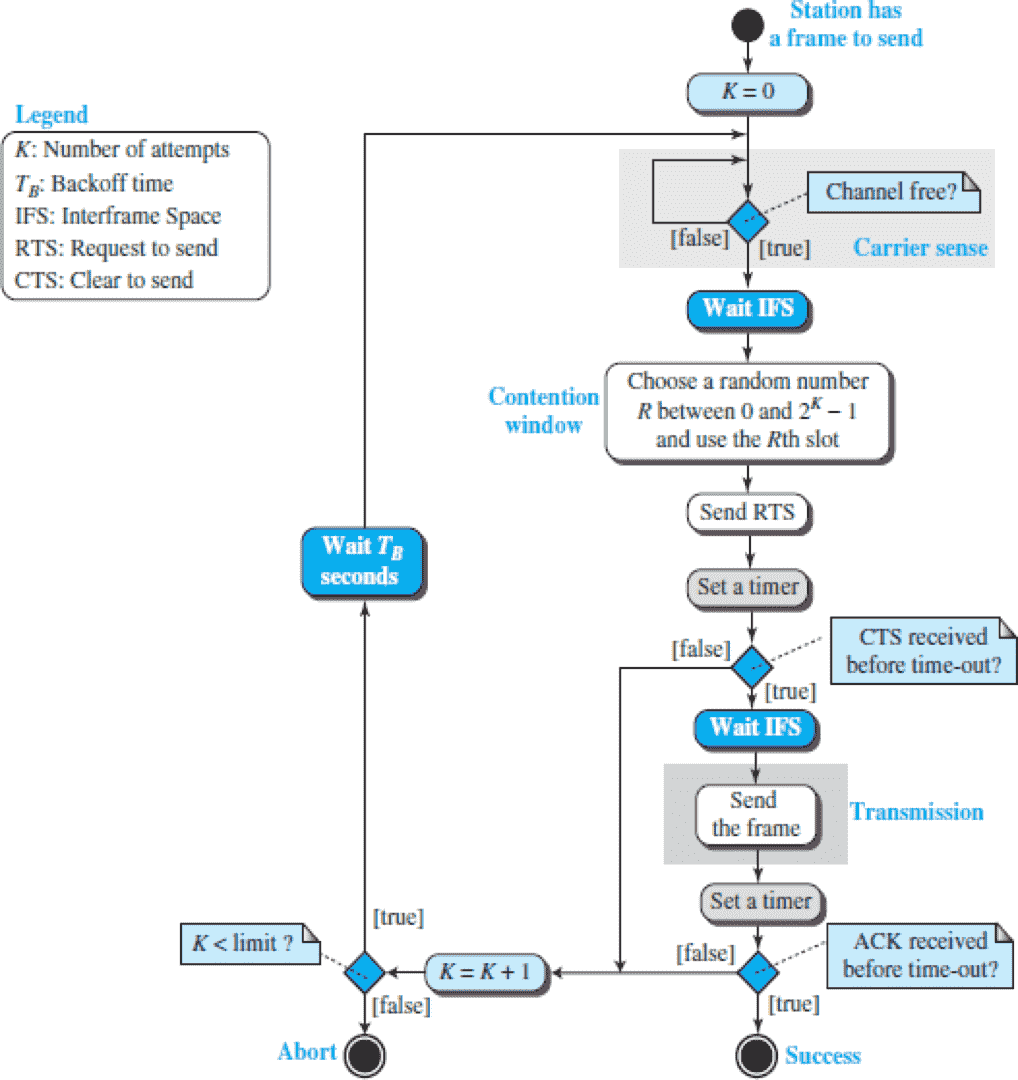
Timeline Diagram¶
| Vertical Format | Horizontal Format |
|---|---|
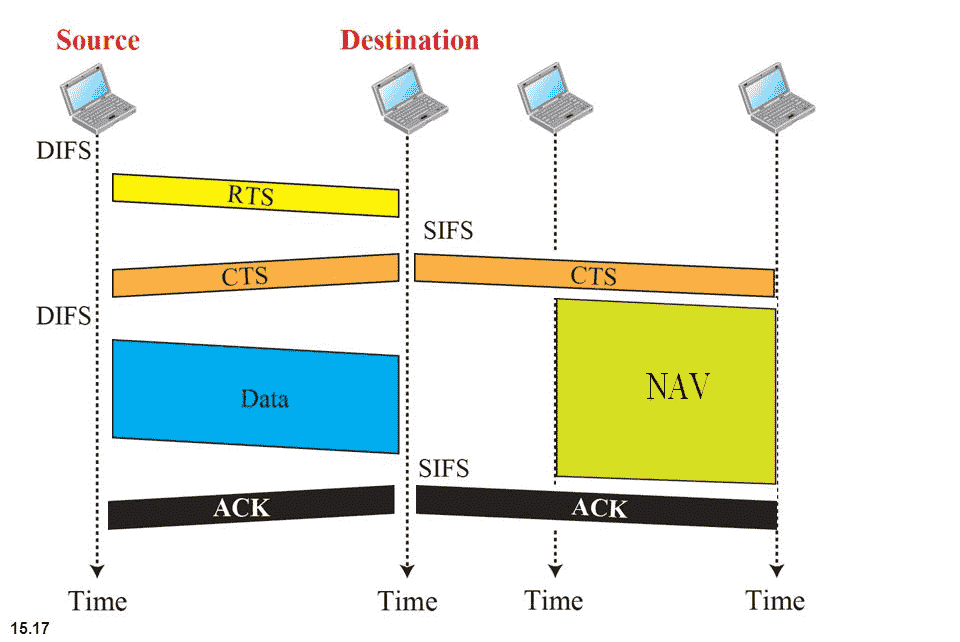 |  |
Wireless Channel Problems¶
| Hidden Terminal Problem | Exposed Terminal Problem | |
|---|---|---|
| Description | Two nodes hidden from each other transmit complete frames to base station | |
| Disadvantage | Wasted bandwidth for long duration | |
| Solution | Small reservation packets: RTS+CTS Nodes track reservation interval with internal NAV | |
| Diagram | 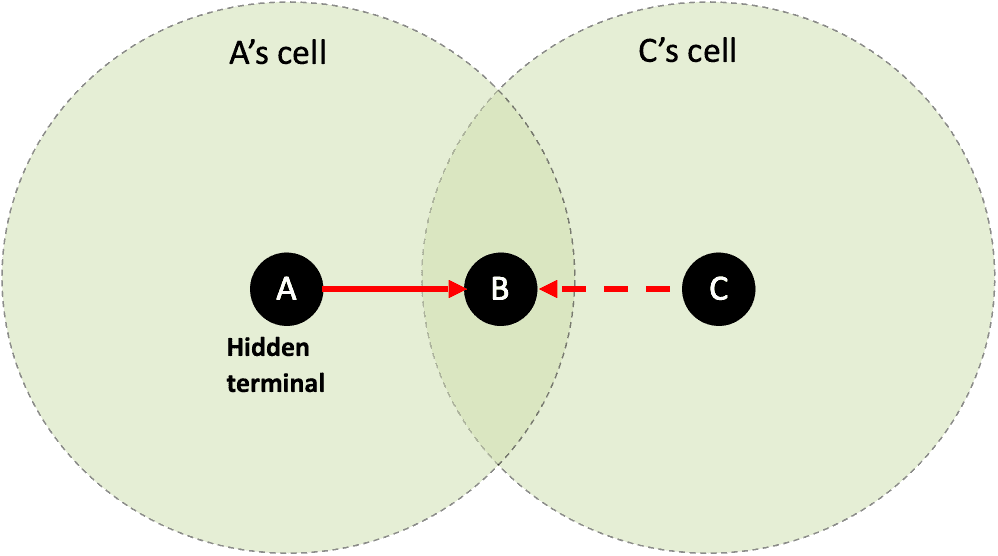 | 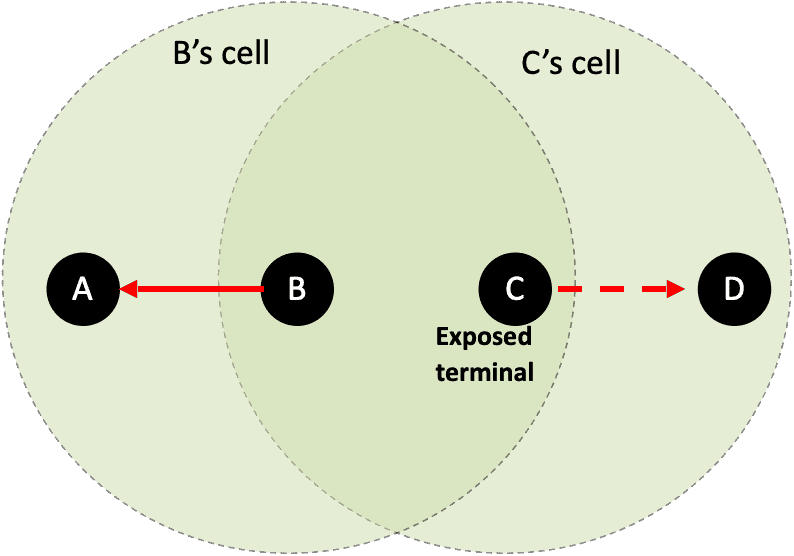 |